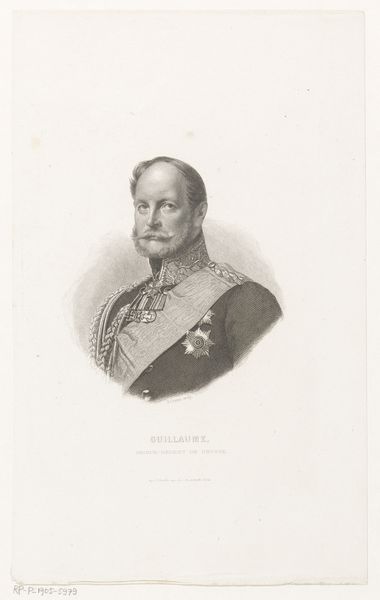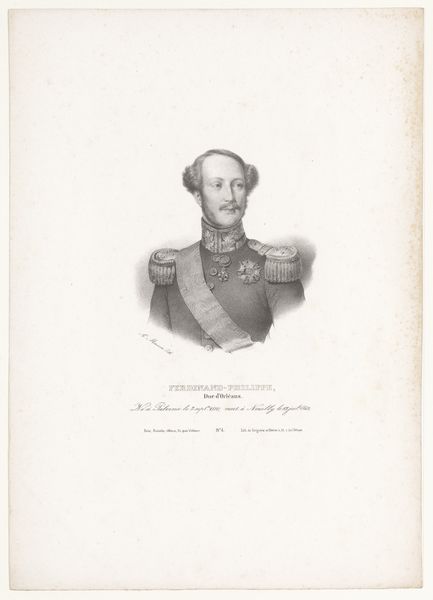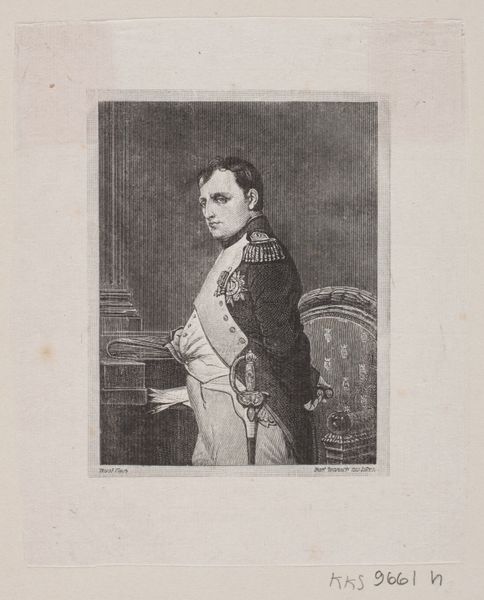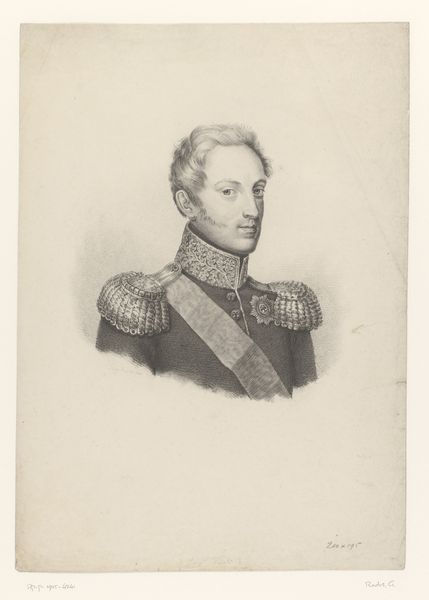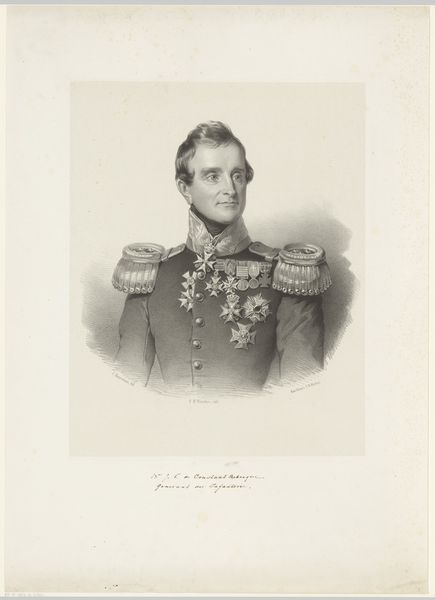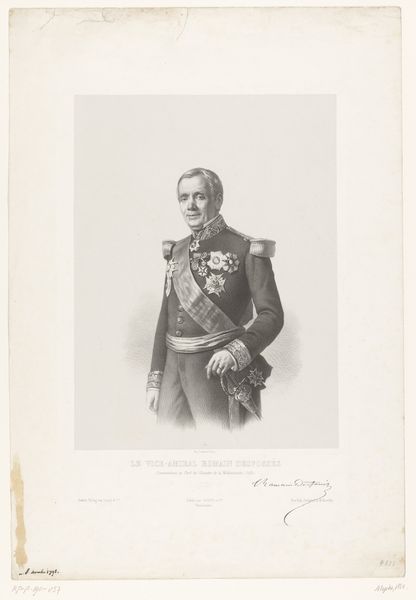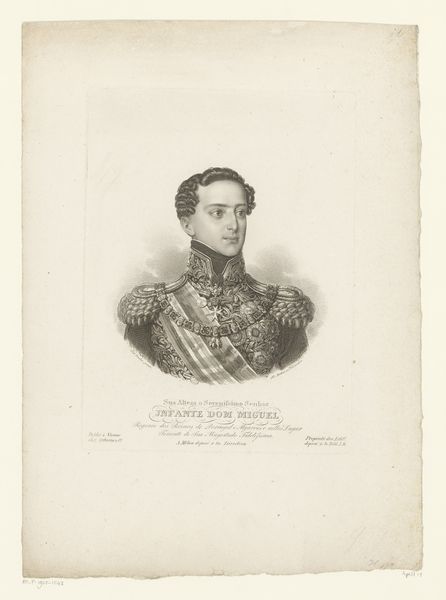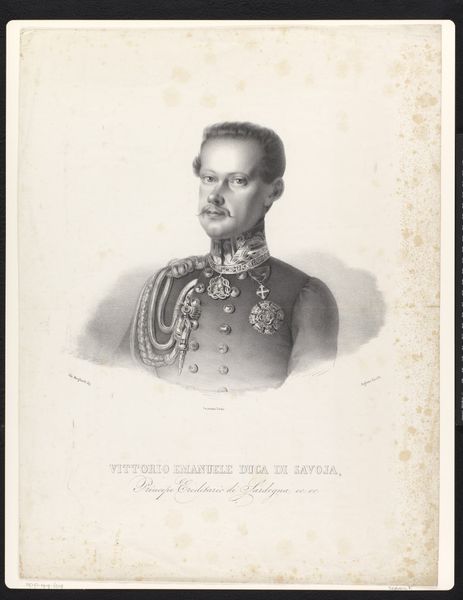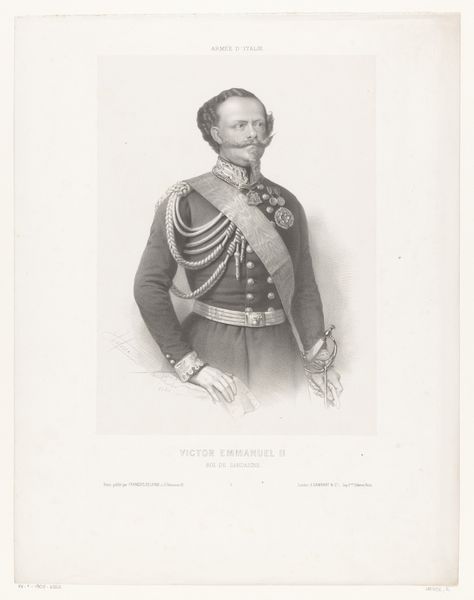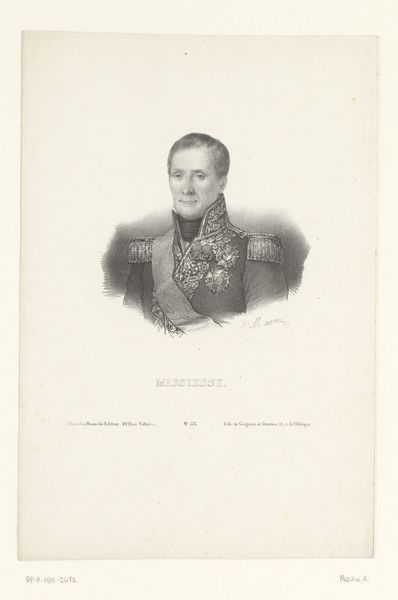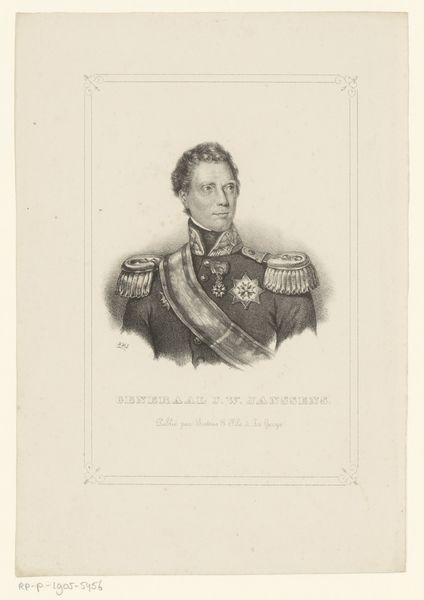
Portret van Karel Alexander van Saksen-Weimar-Eisenach 1842 - 1843
0:00
0:00
charlesrochussen
Rijksmuseum
drawing, pencil
#
portrait
#
pencil drawn
#
drawing
#
light pencil work
#
16_19th-century
#
pencil sketch
#
figuration
#
portrait reference
#
pencil drawing
#
romanticism
#
pencil
#
yellow element
#
pencil work
#
realism
Dimensions: height 362 mm, width 264 mm
Copyright: Rijks Museum: Open Domain
Editor: This is a pencil drawing from between 1842 and 1843 by Charles Rochussen. It’s called "Portrait of Karel Alexander van Saksen-Weimar-Eisenach," and it’s currently held at the Rijksmuseum. The subject’s formal attire and poised stance suggest a mood of authority. What strikes you when you look at it? Curator: The sitter’s very name indicates nobility, but what I find most compelling is the performance of power represented through dress, especially when we consider it as an indicator of class and gender in 19th century European society. Notice the intricacy of the uniform, which clearly delineates a specific social role. What ideologies are being reinforced, or perhaps challenged, through the meticulous depiction of clothing here? Editor: I see what you mean. The detail in the uniform really stands out. So, the artist might be making a statement about social roles through it? Curator: Exactly. Consider how visual representations of class, especially those commissioned by the elite, serve to normalize existing power structures. But is this portrait simply reinforcing the status quo, or could it be interpreted as something more complex? Does the delicate medium, pencil on paper, somehow temper the overt display of authority? Editor: That's a good question. Maybe the choice of pencil makes it feel more approachable than an oil painting would. It sort of softens the image. Curator: Perhaps the fragility inherent in the medium allows for a reading that acknowledges both the subject’s power and its inherent instability. Consider how revolutions throughout Europe challenged established monarchies during this era. Rochussen, in choosing pencil, hints at the potentially precarious nature of authority. What are your thoughts on the gaze and expression on his face? Editor: He looks young, but his expression is serious. Curator: Precisely. That youthfulness juxtaposed with the weighty uniform speaks volumes about inherited power versus earned authority, doesn't it? And thinking about it that way makes me reconsider everything. Thanks! Editor: Yes, looking at the artwork like that changes its whole meaning!
Comments
No comments
Be the first to comment and join the conversation on the ultimate creative platform.
